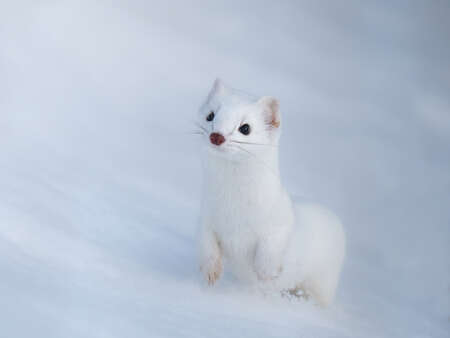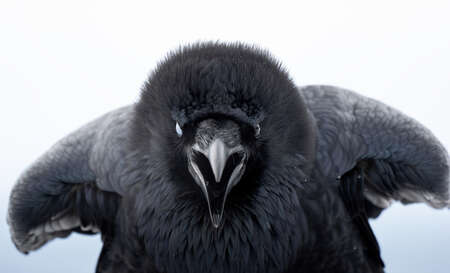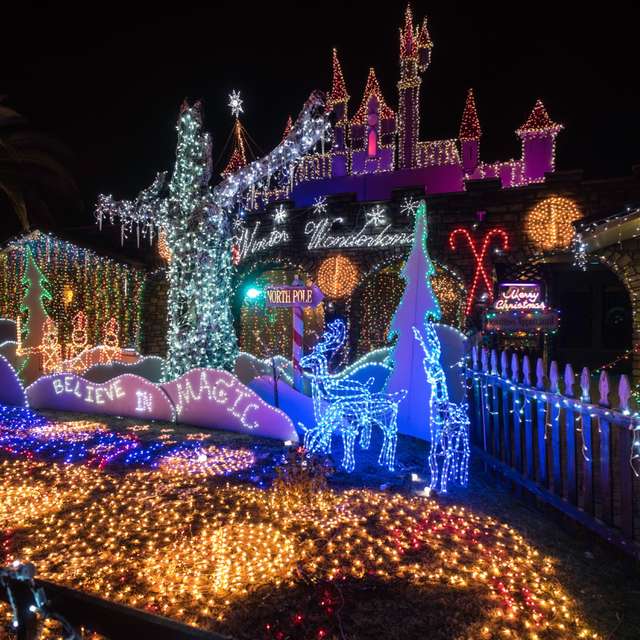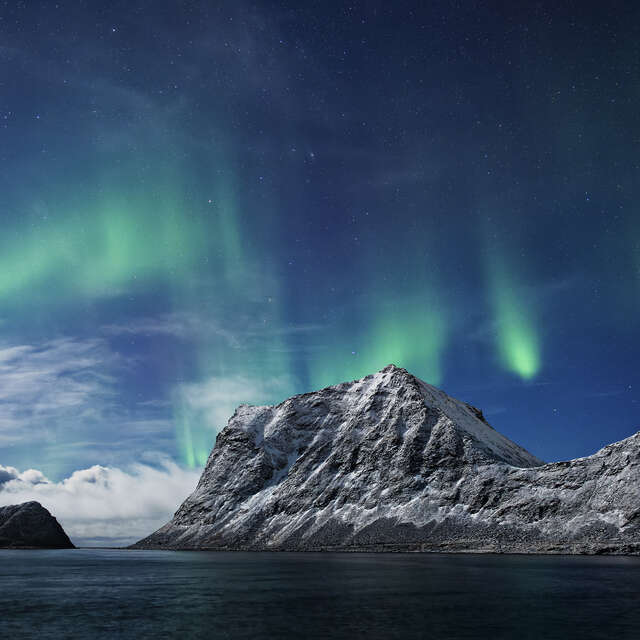As winter releases its grip on the landscape and blue birds are spotted once again, I find myself reflecting on the abnormalities of the season just gone by. Despite expectations of a true Wyoming winter—unforgiving, bone-chilling, and draped in endless snowfall—this year proved to be a departure from the norm. While many would argue it was cold and snowy enough, it lacked that familiar ferocity I've grown accustomed to over the years. The wildlife seemed to agree, their usual locations, patterns, and behaviors disrupted by the atypical conditions. Winters in Jackson, Wyoming are long and most years are made up of more than 6 months of snowy, cold, and unpredictable conditions. Whether it was a mild winter like this year, or near record-breaking like last, each season has brought its own set of lessons.
OM SYSTEM is weather proofed, so you should be too!
Upon relocating to Wyoming, my top priority was acquiring "proper" winter attire. Wyoming's native wildlife, including bison and wolves, are adapted to face sub-zero temperatures and blowing snow day after day. But could I learn to adapt as a native Floridian? The essentials are non-negotiable: thermal base layers, waterproof snow pants, rechargeable hand warmers, wool socks, and insulated boots are just a few items to invest in for surviving Wyoming's unforgiving winter climate.
Respect the locals
As fall transitions into winter, each animal engages in a unique survival strategy to conserve energy as they endure the brutality of winter. Bears retreat to their dens for hibernation, thousands of elk migrate to the National Elk Refuge, and bison hunker down for the long season ahead. As photographers, it is our responsibility to minimize any disruption to our wild subject’s behavior for the sake of capturing an image. While ensuring the safety and comfort of wildlife is always important, it is even more important during winter when they are most vulnerable.
- Minimize your impact
A telephoto lens can be a valuable tool for capturing intimate portraits without intruding on the animals' space. This winter season, I've put the M.Zuiko Digital ED 150-600mm f/5-6.3 IS lens to the test, finding the extra focal length crucial, especially when photographing human sensitive subjects like wolves. This setup allows for close-up, full-frame portraits, while ensuring minimal impact on the wildlife we admire and seek to preserve.
Learn about your subjects
As snow begins to accumulate on the landscape, wildlife can be found in higher concentrations throughout the valley as it becomes difficult for the animals to move through heavy, deep snow. As the snow intensifies, wildlife settles in for the season ahead. As it becomes costly for wildlife to navigate the landscape, it’s not uncommon to see the same animals day after day, only yards from where you spotted them the day prior. Due to the lack of snow this year, wildlife moved around more, didn’t migrate to their typical wintering grounds, and proved to be challenging to find. This meant scouting new locations, photographing animals you wouldn't typically, and adapting to the new environment.
- Location, Track, and Sign
Addressing questions such as where on the landscape your subject resides, its seasonal diet, and its peak activity times can significantly enhance your success out in the field. While in the field, keep an eye out for clues on the landscape, such as tracks and signs left by the animals. These subtle details provide invaluable insight into identification of species, their movement, frequency, and recent activity. The more you know about your subject, the more you’ll succeed photographically.
- Behavior
For your own personal safety and that of your subject, it is important to understand wildlife behavior and what an appropriate distance might be. Understanding your subject's behavior will help you anticipate their movements and therefore assist you in capturing unique and action filled moments. Once you’re in the field with your subject, you’ll begin to learn from first hand experience, something no amount of reading can teach.
Composition
Composition is arguably the most important creative component in any genre of photography. A successful composition brings stories to life, forges connections, and evokes the feeling of being present within the image. Composing a compelling image is not easy, but when your subjects are wild, the difficulties are magnified. Unlike human portraiture, you cannot simply direct your subject to adjust its position. Time spent with wild subjects is often fleeting, their movements are swift, and they rarely cooperate by positioning themselves in the perfect spot. Yet, these are the reasons why you and I love winter wildlife photography.
- Get eye level or even lower with your subject
Getting eye level or lower creates a sense of connection between the viewer and the subject, imparting the feeling of being right there alongside the photographer as they press the shutter. To achieve this, utilize the camera's flip-out screen to allow you to view the scene as you would through the viewfinder. This enables you to position the camera at a lower stance, resulting in a captivating, snowy bokeh foreground.
- Be intentional
Once you've secured your proof of life shots and fired off the initial images in rapid succession, it's time to shake things up. Experiment with different perspectives: zoom in, zoom out, shoot vertically, shoot horizontally. Let your creativity flow. Framing your subject with elements of winter such as frost-covered branches, snowy landscapes, and icy textures, creates an ethereal and serene image. Embracing the slowness and intentionality of winter, will allow you to diversify your images and hone in on your artistic style.
- Don't fill the frame
It's a common temptation to utilize the full range of focal lengths available, often resulting in intimate close-up portraits. However, this approach can sometimes create uninspiring compositions. To create context and curiosity in your images, give your subject some breathing room within the frame. A simple technique is to leave space in the direction the subject is looking or walking, aiming for at least one-third of the image to be an unfilled environment. Winter is full of incredible landscapes, and by incorporating more of the environment into your composition, you not only tell more of the story but also evoke a sense of wonder in the viewer.
Composing the perfect image requires practice, refined skill, and a touch of luck. When these three elements come together to create an image, you’ll find yourself rushing home to download and edit.
Winter light and weather conditions
Winter light, wind, temperature, and never ending snow are a few of the elements that make winter photography unique and interesting.
- Heavy Snowfall
Snow can add beauty and winter charm to a photograph, but shooting in heavy snow can be especially challenging as it adds a barrier between your lens and the subject. In order to ensure tack sharp focus on your subject, flip the switch on your lens to manual focus and use the focus peaking and focus zoom features built into your camera.
- Winter Light
While it is the snow that adds depth and beauty to the landscape, it is the very element that makes exposing images difficult. Experimenting with manually compensating your light metering, can create high key and dynamic photographs. In contrast, underexposing images will allow you to retain as much detail as possible in the highlights. By experimenting in the field with both methods, you’ll find your own artistic style.
- Acclimate your gear
As you load up the car, and begin your morning expedition out into below zero temperatures, running the heat at full blast may provide comfort, but it can seriously affect the quality of your images. Keeping your heat off, and possibly even cracking a window to acclimate your gear to the outside temperature before shooting, will minimize distortion in your images. If this isn’t possible, allow for a few extra minutes in the field to adjust before snapping your first images.
Waiting on winter’s return
As quickly as winter comes, it goes. As excited as I am to welcome spring and summer, there’s nothing more exciting than the first snow storm that transforms the landscape. As the powder engulfs the sagebrush and turns the ecosystem into a minimalist dreamscape, winter wildlife photography comes alive. So for now, we say farewell to winter, but it won’t be long till we're reunited with the cold, short days. Once again we’ll find ourselves bundling up, preparing gear, and adventuring into the frosty embrace of winter, where magical encounters with wildlife await.
Featured Products:
Tiffany is a wildlife photographer and naturalist guide in the Greater Yellowstone Ecosystem. Growing up near the water, her love for scuba diving brought her close to nature and marine life and provided a profound appreciation for wildlife. Enamored by photographing life under the water and landscapes above, led Tiffany to fall in love with photography. She pursued a Bachelor's degree in Fine Art with a focus in Photography and moved to Jackson shortly after to explore the mountain west through the lens of her camera.
Tiffany is focused on fostering a deep appreciation and connection to wildlife through her photographic work. Her bright and ethereal post processing brings her work to life and establishes connection between the animal and viewer. Whether photographing unique animal behavior, or guiding guests through the mountains, Tiffany is always excited to share her passion for wildlife and both Grand Teton and Yellowstone National Park, where she spends most of her days. This summer Tiffany will be living and working at Brooks Lodge in Katmai National Park.
CONNECT WITH TIFFANY
Website: Tiffany Taxis
Instagram: @tiffanytaxis
Facebook: @tiffanytaxisphotography










